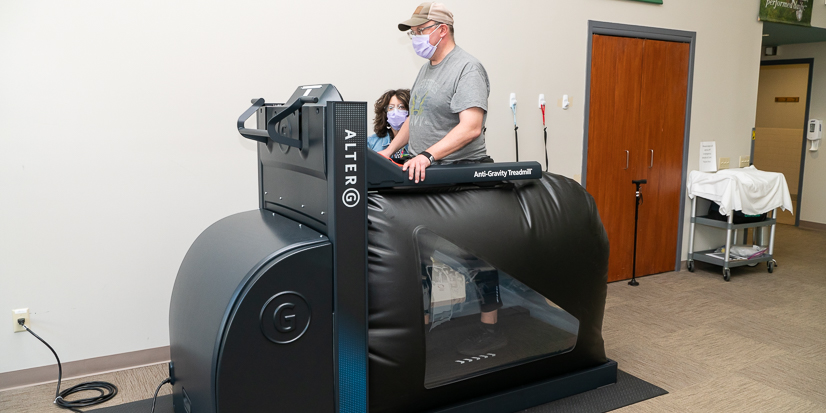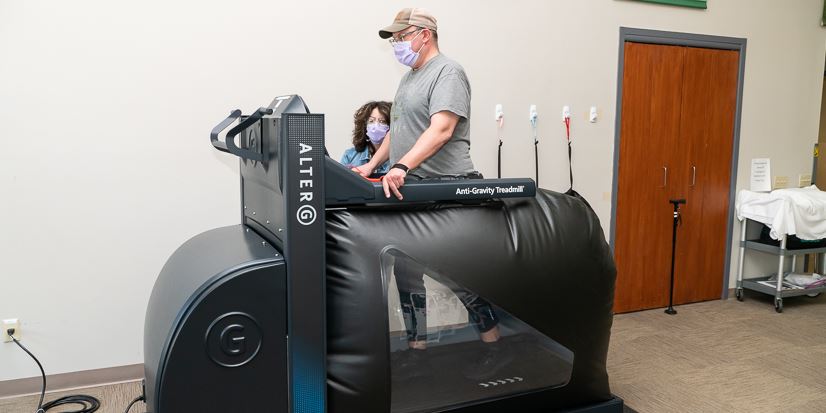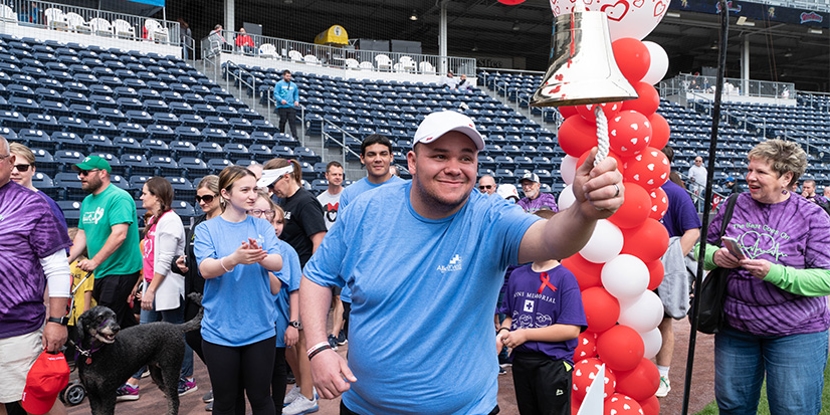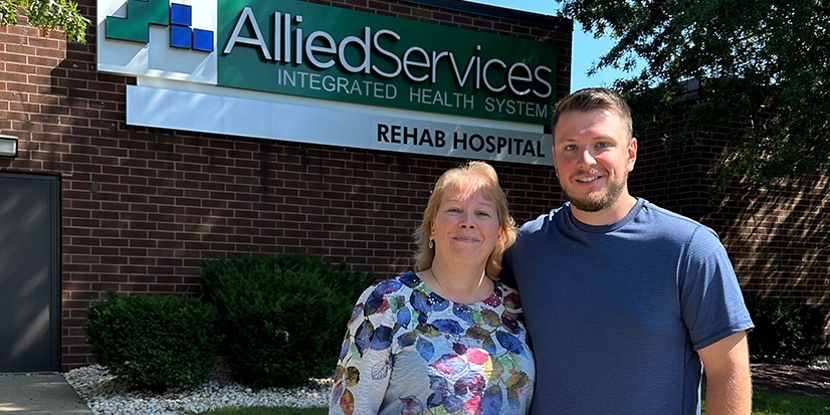Fighting Back after Stroke: Tim's Story
- Author: Tim H


Tim H lived an active life in Colorado before his stroke. He returned from a Labor Day weekend biking excursion and went to the gym as usual. That’s when he felt something different, something wrong. He was suffering a stroke.
“All of a sudden, the left side of my body went numb and my one hand started to swell. I knew right away I was having a stroke and had to get to the hospital.”
He made it back to his apartment and his sister rushed him to the hospital.
“When we got to the hospital, I couldn’t move at all. They had to come and get me out of the car and I really don’t remember much after that.”
“When I came around, the doctors told me I had suffered an acute hemorrhagic stroke. And I had made the mistake of taking aspirin when I was in my apartment.”
While aspirin may help in the prevention of a clot-related stroke, it can complicate the situation of a bleeding or hemorrhagic stroke. A hemorrhagic stroke, like Tim had, is commonly called a brain bleed or an intracerebral hemorrhage (ICH). An ICH occurs when a blood vessel in or around the brain ruptures and blood accumulates in the tissue around the rupture. This puts pressure on the brain and causes a loss of blood to the surrounding areas.
Hemorrhagic strokes are typically caused by weakened blood vessels like an aneurysm and arteriovenous malformations (AVMs). The most common cause of hemorrhagic stroke is uncontrolled high blood pressure.
“I couldn’t believe it. Sure, I was a little over weight, but I was so active and I felt so good. I even ran a marathon! I never knew I had high blood pressure. The doctor said that over time, the vessel just became weak and burst.”
Seeking the best care at Allied Services
Tim spent 2 weeks in the Colorado hospital before returning to the Scranton area to begin his stroke recovery journey.
“The hospital in Colorado knew about Allied Services. My brother is a big fan of Allied, and my father is here (Scranton area). The house here was all set up the way I needed it to be. I was in a wheelchair, I couldn’t walk, my arm was weak, I was weak. So we decided it would be best for me to come back.”
A stroke can cause significant impairment. The damage caused by a hemorrhagic stroke can be a result of the pressure on other tissues caused by bleeding, swelling, or a lack of blood supply. Besides depriving the brain of oxygen and killing brain cells, bleeding inside the brain also prevents nerve cells from communicating with the parts of the body and the functions they control. This can result in the impairment or complete loss of memory, speech, and movement in the affected area.
Hemirparesis and hypertonicity
Allied Services physical therapist Sondra Morgan, PT, DPT, MHA was able to give us a bit of insight into Tim’s condition.
“Tim’s stroke resulted in weakness in his left side. This weakness or inability to move on one side of the body is known as hemiparesis, and can make it very difficult to walk, maintain balance, or perform everyday activities. Tim also has hypertonicity in his left arm and leg. Hypertonicity is an involuntary muscle tightness which makes moving body parts more difficult. It is caused when parts of the brain find it hard to send the right signals to the coordinating muscles."
“When Tim first came to us in late October, he was mainly using a wheelchair to get around, but could ambulate very short distances with assistance and the use of a quad cane. By November, we had him training in the Exoskeleton and he was really making incredible progress. His gait speed and endurance were improving and by January, he was no longer using his wheelchair.”
Recovering from a stroke can be a challenging and emotional process and is different for everyone. Not all people go through the stroke recovery in the same way. It depends on many factors, including the severity of the stroke, what part of the brain is affected, their age, and other factors. Some may not be able to return home. On the other hand, someone may only require outpatient services. In either case, staying motivated throughout the recovery process and consistent practice is essential in recovery.

Milestones in stroke recovery
“Tim is constantly setting new goals for himself and while the goals he sets are personal goals, we work together to make sure they are appropriate and reachable. He works incredibly hard when he is here and does so much outside of therapy that helps too. Having that type of motivation has really helped his progression.”
Tim reflected on the feeling he had when he first used the Exoskeleton and how it fueled his desire to get better. “I remember the day I got out of the wheelchair. It was like a little bit of freedom. It was just incredible and I wanted it more.”
“Being a very goal-oriented person, I am constantly setting goals for myself. One of my goals was to walk a mile around the track and I did that. Now I can do 2 miles without my cane. I am going to keep setting my goals and I hope to be able to get back on my mountain bike in the future.”
Seeing progress with advanced rehab technology
Through his own hard work and the dedication of his therapy team, Tim has progressed even more in his stroke recovery moving on from the Exoskelton to a new piece of technology known as the AlterG®.
The AlterG® Anti-Gravity Treadmill is based on NASA-developed Differential Air Pressure (DAP) technology. Surrounding the patient with a cushion of air, this specialized technology allows patients to exercise while unweighting up to 80% of their bodyweight.
“By lowering body-weight impact, the AlterG® not only allows Tim to walk more freely, it enables a variety of balance exercises that may otherwise be too risky or painful when not supported,” noted Sondra.
Along with body-support, the AlterG® also has features that are particularly useful for stroke recovery. A large video display provides real-time gait analytics and video monitoring, giving instant feedback to both the patient and the therapist.
Real-time gait analytics measure gravitational load and provide both the therapist and patient simplified visual feedback to help monitor and correct gait asymmetry. This technology also enables the therapist to monitor pain levels to ensure safe and effective workouts.
Video monitoring is especially useful for helping patients see and understand abnormal gait patterns they may not otherwise feel. Since stroke survivors are often relearning certain walking movements, it is useful for them to actually see themselves walking and self-identify corrections.
“The AlterG® has been a game changer. I’m a visual learner - so being able to see my stride on the screen and understand the how and why of what I need to do correct my walking pattern has been AWESOME! It really is a total game changer.”



